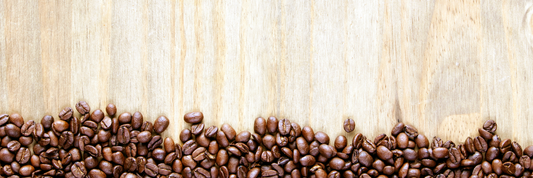Have you ever wondered how long your reusable bags would last? Is there any sort of reusable that is more environmentally friendly and cost-effective to use in your supermarket? Find out in today's blog post!
Types of Reusable Bags
What are reusable bags?
Reusable bags are made to be filled with groceries, clothing, or other items and used again. Their reusable and washable nature sets them apart from single-use plastic bags, rendering them a more economical and ecologically sustainable choice.
Common types of reusable bags
There are several varieties of reusable bags available. The following table lists some of the most popular reusable bags along with their benefits and drawbacks, broken down by material:
|
Material |
Pros |
Cons |
|
Cotton Bags |
Durable, breathable, washable, eco-friendly, customizable |
Heavier, may shrink or wrinkle after washing |
|
Canvas Bags |
Very strong, water-resistant, durable, customizable |
Heavier, more expensive |
|
Non-Woven Bags |
Lightweight, inexpensive, reusable, foldable, customizable |
Not very strong, not water-resistant, not biodegradable |
|
Recycled PET Bags |
Made from recycled materials, lightweight, strong, water-resistant, durable |
Can be expensive, may not be as eco-friendly as other options |
|
Laminated PP Bags |
Very water-resistant and tear-resistant, easy to clean, customizable |
Not biodegradable, may be expensive |
|
Recycled Laminated PET Bags |
Made from recycled materials, water-resistant and tear-resistant, easy to clean, eco-friendly |
May be expensive, not as widely available as other options |
|
Jute Bags |
Natural and eco-friendly, very strong and durable, breathable, customizable |
Can be heavy, not water-resistant, may be expensive |
Common design of reusable shopping bags
When it comes to design, reusable shopping bags are frequently designed for convenience and versatility. Here are a few examples of popular designs:
- Tote bags: large capacity, versatile, customizable, but bulky empty and may not support heavy loads.
- Insulated bags: Keep food at desired temperatures, but heavier and bulkier.
- Mesh bags: Ideal for produce, breathable, washable, and foldable, but unsuitable for heavy or fragile items.
- Foldable bags: Compact and portable, but may not be as strong or durable.

Lifespan of A Reusable Bag
Factors that impact to lifespan of reusable bags
Reusable bag lifespans are influenced by various factors, such as the construction of materials, patterns of use, and environmental conditions.
Material that matters
- Natural Fibers: Cotton, canvas, and jute are known for their durability and eco-friendliness. They can last for years with proper care. However, they are susceptible to mold and mildew when exposed to moisture for extended periods.
- Synthetic Fibers: Nylon, polyester, and polypropylene offer high strength, water resistance, and ease of cleaning. They can withstand heavy loads and frequent use. However, some are not biodegradable and raise environmental concerns.
- Recycled Materials: These are a sustainable option and often have similar durability to virgin materials, contributing to reducing waste.
Construction
- Stitching: Strong stitching with tight seams is essential for preventing tears and rips. Double-stitched seams offer extra durability.
- Reinforcement: Reinforced stress points like handles and attachment points significantly increase the bag's lifespan.
- Closures: Drawstring closures or zippers help keep the contents secure and prevent spills.
Use and Care
- Frequency of Use: The more frequently a bag is used, the faster it will wear out. Rotating multiple bags can help extend their individual lifespans.
- Weight of Contents: Overloading a bag can put undue stress on the stitching and fabric, leading to damage. It's important to follow the bag's weight capacity guidelines.
- Cleaning: Regular cleaning according to the material's care instructions will help prevent dirt, grime, and stains from accumulating and causing damage.
- Storage: When not in use, store reusable bags in a cool, dry place away from direct sunlight and extreme temperatures.
Environment
- Exposure to Sunlight: UV rays can weaken the fabric and fade colors over time. Limiting sun exposure will help prolong the bag's lifespan.
- Moisture: Exposure to moisture can lead to mold, mildew, and rotting. Drying wet bags thoroughly before storing them is crucial.
- Extreme Temperatures: Freezing temperatures can make some materials brittle and prone to cracking, while high temperatures can cause them to melt or warp. It's best to avoid exposing reusable bags to extreme temperatures.
How long does a reusable bag last?
The lifespan of reusable bags depends on various aspects, as previously discussed. Here are the estimated times for each material, as well as how the components affect the lifespan of a reusable bag:
Material
- Cotton and Canvas: 3-5 years with proper care.
- Jute: 2-3 years.
- Recycled PET: 2-5 years.
- Non-Woven Fabric: 1-2 years.
Design
- Reinforced construction: Extends lifespan.
- Quality closures: Minimizes wear and tear.
- Weight distribution: Prevents specific parts from over-stress.
Usage
- Frequency: More frequent use reduces lifespan.
- Load: Overloading can damage the bag.
- Care: Regular cleaning and proper storage maintain the bag's condition.
- Environment: Harsh conditions like sunlight or extreme temperatures can degrade materials.
General estimates
- High-quality reusable bag: 3-5 years with proper care.
- Lower-quality reusable bag: 1-2 years.
How to Extend Lifespan of Reusable Bags?
Here are some ideas for prolonging the use of reusable bags so they last longer:
- Select high-quality materials: Look for bags composed of materials that are robust and long-lasting, such as recycled PET, cotton, or canvas. Compared to materials constructed of thinner materials, these materials are more durable and can support heavy loads and regular use.
- Follow care instructions: Each material has unique care requirements. For instance, canvas bags can be spot-cleaned or machine-washed on a mild cycle, whereas cotton bags might need to be washed in cold water. You can keep the bag functional and help avoid damage by following the care instructions.
- Refrain from overloading your bag: This might cause rips and tears in the handles and seams. Don't stuff things that are too heavy within; instead, distribute the weight equally.
- Clean frequently: By washing your bags on a regular basis, you can get rid of food stains, grime, and other impurities that might cause the material to degrade. When it's feasible, let them air dry after washing them by the care recommendations provided.
- Store correctly: Keep your bags out of direct sunlight and strong chemicals by storing them in a cool, dry location when not in use. This will lessen the likelihood of material deterioration, fading, and discoloration.
- Repair minor damage as soon as possible: Don't disregard small tears or loose stitching. Replacing them quickly will stop additional damage and increase the bag's longevity.
- Steer clear of hostile environments: The material in your bags may become weaker and have a shorter lifespan if they are exposed to high temperatures, intense sunshine, or harsh chemicals. Think carefully about where you use and store your bags.
- Use different bags for different purposes: Some bags are specifically made for specific duties, such as transporting big groceries or delicate items. Avoiding needless wear and tear is possible by using the appropriate bag for the task.
- Invest in quality bags: While it may be tempting to purchase inexpensive disposable bags, investing in a few high-quality reusable bags will save you money in the long term. They won't need to be replaced as often and will last longer.
Reusable Bag from Kimecopak
At Kimecopak, we supply grocery stores, convenience stores, supermarkets, and any other business that wants to transition to reusable bags. Our reusable bags, which are made of non-woven fabric, are a great environmentally responsible option that fully supports Canada's prohibition on single-use plastics.
We offer small, medium, and large reusable bags to meet every demand and specification of your business. Furthermore, our material may be used as a possible marketing tool for your company with the customized service. Please get in touch with us via the Kimecopak Facebook Fanpage or by email at halo@kimecopak.ca for additional information.
Frequent Asked Questions
How often do people forget reusable bags?
According to a 2014 survey conducted by a marketing research company, 40% of the time, people who own reusable bags forget their bags, which forces them to use plastic bags. If you decide to utilize reusable bags, you must implement techniques to minimize your usage of plastic. For example, always keep an extra bag on hand, make it a habit to bring a bag, set reminders,…
How long do reusable food bags last?
Compared to single-use plastic bags, a high-quality reusable food bag can last for several years with proper care, depending on the type of food. This can save you money and reduce waste.
How many times can you use a cloth bag?
Many uses—thousands or perhaps thousands—of well-made cotton bags are possible, depending upon the aforementioned parameters. According to some research, cloth bags need to be used 50-100 times to counteract the environmental effect of their creation as compared to single-use plastic bags.




